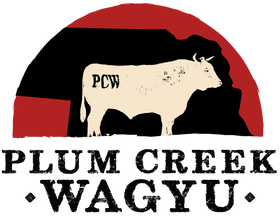The Wagyu Lifecycle: From Calf to Culinary Delight
Wagyu beef is revered for its unmatched tenderness, rich marbling, and deep flavor, but what makes it so special? The answer lies in the meticulous care and attention given to these cattle from birth to butcher. Let's take a closer look at the journey of a Wagyu calf and how its unique upbringing results in one of the most luxurious beef experiences in the world.
1. Selective Breeding: The Foundation of Excellence
The journey begins with careful breeding. Wagyu cattle are bred for their superior genetics, focusing on marbling potential, temperament, and overall health. Many ranchers use artificial insemination or controlled breeding programs to ensure the highest quality offspring. The bloodlines of Wagyu cattle are meticulously tracked, with Japanese Black being the most common breed used for premium beef production.
2. Early Life: The First Few Months
Newborn Wagyu calves receive exceptional care from the moment they arrive. They stay with their mothers for several months, nursing and building up essential nutrients. During this period, ranchers monitor their health closely, ensuring they grow at a steady, healthy pace. The stress-free environment provided at this stage is crucial to maintaining the high-quality meat Wagyu is known for.
3. Specialized Feeding Program
Unlike commercial cattle, Wagyu are fed a carefully curated diet to enhance marbling and tenderness. Their diet often includes a mix of high-quality grains, rice straw, and sometimes even beer or sake mash, which is believed to improve digestion and appetite. This feeding regimen, which can last anywhere from 24 to 36 months, allows Wagyu cattle to develop the signature fat marbling that makes their beef so buttery and flavorful.
4. Stress-Free Environment & Ethical Ranching
Wagyu cattle are raised in low-stress environments to ensure their meat remains tender. Many farms incorporate massages, classical music, and other calming techniques to keep the animals relaxed. A stress-free cow produces higher-quality beef, which is why Wagyu ranchers go to great lengths to provide optimal living conditions.
5. The Final Stage: Butchering & Aging
When Wagyu cattle reach their ideal weight, typically around 1,500 pounds, they are humanely processed. The beef is then graded based on marbling, color, and texture, with the highest grades receiving the coveted A5 rating. Many Wagyu cuts undergo a dry-aging or wet-aging process to enhance their flavor before being sold to high-end restaurants, specialty butchers, or directly to consumers.
The Result: A Culinary Masterpiece
From the careful selection of breeding stock to the meticulous feeding and handling, every step in the Wagyu lifecycle contributes to its superior quality. This attention to detail is what makes Wagyu beef unlike any other, delivering an indulgent, melt-in-your-mouth experience that food lovers around the world crave.
Final Thoughts
When you enjoy a perfectly cooked Wagyu steak, you're tasting the result of years of dedication and craftsmanship. The next time you savor that rich, buttery bite, you’ll appreciate the journey it took to get to your plate.
Related Posts
How We Select and Age Our Wagyu Beef for Optimal Flavor
Learn about the process of selecting and aging Wagyu beef at Plum Creek Wagyu. Discover the differences between dry-aging and wet-aging and how each method enhances the flavor and tenderness of our premium Wagyu cuts.
How We Select and Age Our Wagyu Beef for Optimal Flavor
Learn about the process of selecting and aging Wagyu beef at Plum Creek Wagyu. Discover the differences between dry-aging and wet-aging and how each method enhances the flavor and tenderness of our premium Wagyu cuts.
Sustainable Ranching at Plum Creek Wagyu: Our Eco-Friendly Practices
Discover Plum Creek Wagyu’s commitment to sustainability and eco-friendly ranching practices. Learn about our efforts in land stewardship, water conservation, and reducing our carbon footprint to produce premium Wagyu beef responsibly.
Behind-the-Scenes at Plum Creek Wagyu: From Pasture to Plate
Discover the life cycle of a Plum Creek Wagyu cow, from birth to plate. Learn about the care, feeding, and stress-free environment that contributes to the exceptional quality of our Wagyu beef.
Wagyu Beef vs. Kobe Beef: What’s the Difference?
Curious about the difference between Wagyu and Kobe beef? Learn how these two premium beef types differ in terms of origin, quality, and flavor, and discover why Kobe beef is considered the gold standard of luxury dining.
The Science Behind Wagyu Marbling: Why It’s So Special
What makes Wagyu beef so incredibly tender and flavorful? The secret lies in its marbling. Discover the science behind Wagyu’s signature fat distribution and why it creates the ultimate steak experience.








